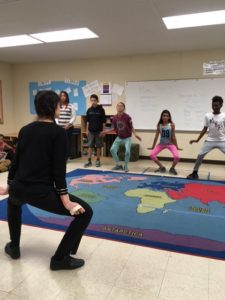
The California Department of Education will assembly panels of educators to help craft the revisions to the standards. Here are some of the key issues I hope they will address.
Should we expand our definitions of the visual and performing arts?
Typically when we refer to the visual and performing arts we mean visual art, music, dance, and theater. But we live in a world where art and artists cross boundaries and mix media all the time. How shall we recognize poetry and spoken word? Where do film, television, video and other media arts fit in this picture? Do we want to stay separate from Career and Technical Education course offerings or is there room for collaboration and connections.
How much art is enough?
Can a quality arts education consist of learning in just one arts discipline K-12? Should we expect students to receive instruction in every arts discipline? What are realistic and feasible requirements for all schools and districts in terms of what they provide for each student?
What do today’s students want and need from arts education?
Kids walk into class holding a cellphone that connects them to the world. They are listening to music, watching and creating videos, taking and editing photographs all day long. What can schools teach them that they don’t already know? How can schools add value and teach new skills and understandings without seeming outdated and out of touch?
How do we rebuild arts education for today’s students?
Most of what we share in arts education comes from European cultural traditions. Most of California’s students come from other places. How can we remake arts education to celebrate and include the arts and cultures of every student? How can we be sure all students feel valued and are not made to feel as “the other” or “less than” in terms of the cultural assets and traditions they bring to the table?

